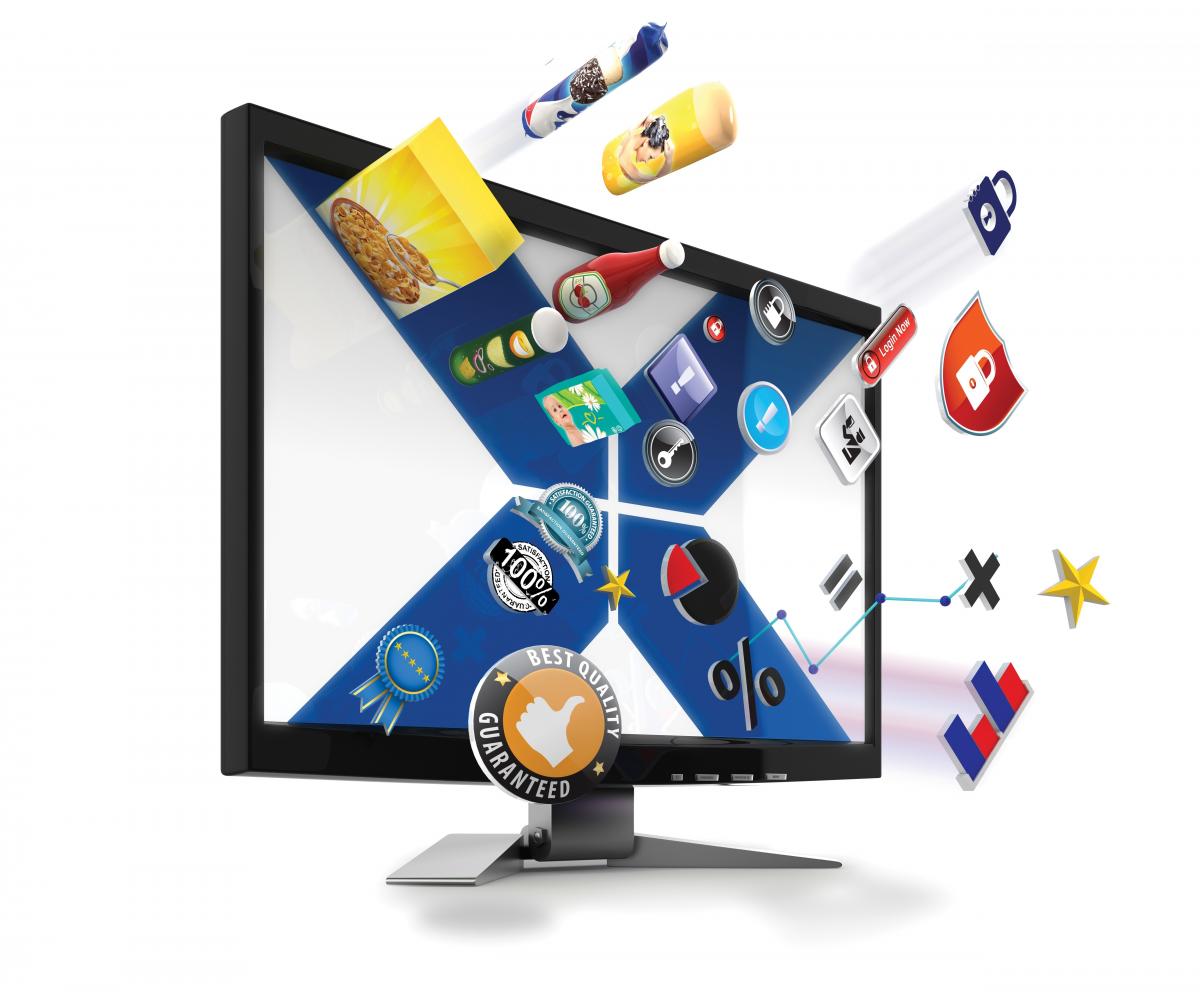ACCORDING to the McKinsey & Company’s Industry 4.0 Global Expert Survey1 conducted last year, most respondents see Industry 4.0 as an opportunity and think that with it their company’s competitiveness will grow aside from anticipating 10-15% cost and revenue improvements.
But the report’s assessment is that “Industry 4.0 raised high expectations, and not all have been met yet. Nonetheless, a handful of manufacturers have discovered numerous, specific applications for Industry 4.0 and are reaping benefits.”
Three hundred experts from the United States, Germany, and Japan, joined the survey representing companies which included industries such as consumer goods, among other major manufacturing sectors.

Rockwell Automation’s five-stage Connected Enterprise Execution Model helps manufacturers become Connected Enterprises and use their most valuable asset – data
Adoption and impact in the region
Industry experts in the region are also positive about Industry 4.0 as they expect more companies to get on board.
“Changing consumer preferences, escalating sustainability concerns, increasing safety and legislative issues, as well as rising raw-material and energy costs demand F&B producers in the region to keep a constant eye on optimized efficiency and performance,” declares Pierre Teszner, regional director for Southeast Asia at Rockwell Automation.
“These challenges necessitate the adoption of Industry 4.0 to remain agile, transparent, operationally excellent and ready to move from mass production to mass customization – based on customer-intimacy data.”
Mr Teszner further asserts that the integration of information technology (IT) and operations technology (OT) within manufacturing environments results in real-time collaboration based on contextualized information and operational-intelligence sharing. He adds, “consequently, F&B organizations are experiencing a range of benefits including shortened time to market, lowered total cost of ownership, enhanced asset utilization, minimized corporate-risk management and exceptional workforce efficiency.”
Daniela Verhaeg, marketing manager for Safeline X-ray at Mettler-Toledo believes that “for Asian countries that are ready to adopt the concept, gains can be made in terms of operational efficiency and the ability to offset high production costs.”
Ms Verhaeg adds, “For developing countries in the region, there is the potential to adopt brand new manufacturing solutions that will enable them to increase competitiveness and eventually to climb higher in the value chain. There is speculation that these new, advanced manufacturing processes, combined with relatively inexpensive labor forces, for example, could lead to increased availability of high quality but inexpensive products.”
Industry 4.0 defined
Rockwell Automation defines Industry 4.0 as “how Industrial Internet of Things (IoT) enables information collection and sharing where and when it is needed to drive faster decision making, enhanced productivity, heightened competitiveness, and, ultimately, maximized business value.
This term signifies the rise of smart devices, the development of cyber-physical infrastructures (Self and System Aware machines), and the evolution of smart digital manufacturing (The Connected Enterprise).”
Mettler-Toledo explains Industry 4.0 as “the process of integrating machines, computer systems, robots and other digital tools within the manufacturing process, effectively creating what is known as a ‘smart factory’.
The concept is that interconnected machines, digital systems and human beings will take control of manufacturing and distribution processes to make significant productivity gains.”

Mettler-Toledo’s improved data management software package, ProdX 2.0, enables manufacturers to connect product inspection equipment across the entire production line into a single, unified network.
Embrace smart manufacturing
Ms Verhaeg at Mettler Toledo points out that demand drives interest for Industry 4.0 in the food and beverage sector.
“Consumers’ appetites for increasingly wider ranges and choices has led to product proliferation, and manufacturers must work ever harder to keep up with the demands of the retail supply chain,” she continues. “Industry 4.0 may allow manufacturers to streamline operations, increase line speeds and therefore overall throughput. Regulatory compliance must be taken into consideration of course, and any manufacturer looking to implement Industry 4.0 must look to integrate product inspection systems as part of that process.”
Rockwell Automation sees that singular preferences of each customer, social media and mobile devices impels manufacturers in the region to welcome Industry 4.0.
“F&B is unique in the process world given the singular preferences of each customer, requiring plant managers to respond to varying market dynamics related to food tastes and to manage brand equity when negative news goes viral on social media,” says Mr Teszner.
“With the advent of social media and mobile devices in today’s digital world, F&B companies are challenged to stay ahead of public online posts when an adverse occurrence happens. They must respond with fast, accurate recalls, facilitated by automated systems that can support such swift redirection,” he further explains.
“Moreover, upcoming regulations in the region will soon require F&B firms to incorporate traceability to check ingredient sources, identify defective products and schedule recalls. Only by embracing smart manufacturing can they truly appreciate any deficiencies in their processes and drive effective enhancements.”
Smooth execution?
Based on the McKinsey report, six out of ten manufacturers encounter operational obstacles “that are so strong that they achieved either limited progress in the last year or none at all. Among the implementation barriers, some seem to be more relevant at the very beginning of the implementation journey while others only emerge when players are already more advance.”
The top five barriers according to the respondents are:
1. Difficulty in coordinating actions across different organizational units
2. Lack of courage to push through radical transformation
3. Lack of necessary talent, e.g. data scientists
4. Concerns about cybersecurity when working with third-party providers
5. Lack of clear business case that justifies investment in the underlying IT architecture
“There is every reason to believe it will be a measured and slow process, particularly given the high levels of investment required with no tangible scale to gauge potential returns,” says Ms Verhaeg.
“Industry 4.0 will require established and sophisticated manufacturing lines and supply chains to be in place ahead of implementation, and strong public institutions in order to create the regulatory frameworks necessary to ensure standards are sufficiently high.”
She further acknowledges that for a number of emerging economies there is a long way to go before the matter of Industry 4.0 can be realistically considered.
But Mr Teszner observes that most of the F&B multinationals have led quicker execution of Industry 4.0, with some of their global HQ corporate-engineering teams driving local implementations in Southeast Asia.
“Those companies that are already running mature ERPs and integrated/fully automated manufacturing systems will find the transition to intelligent production more seamless, as their infrastructure is technology-ready. However, those who are less developed will have to first invest in upgrading their legacy factories and installing Ethernet/IP-based networks throughout the firm before taking the jump to Industry 4.0,” he explains.
Help companies navigate
Rockwell Automation prides itself in bringing the value of The Connected Enterprise to its customers.
“Central to achieving The Connected Enterprise is the convergence of IT- and OT - leveraged over EtherNet/IP – to provide end-to-end connectivity from the plant throughout the company,” describes Mr Teszner.
“Rockwell Automation coined the phrase ‘The Connected Enterprise’ to describe those unified firms that are integrating production information from self-aware and system-aware intelligent sensors, converting it into contextualized, real-time shop-floor knowledge, and sharing it seamlessly with executives company-wide.”
At Mettler-Toledo, Ms Verhaeg explains: “Across the range of product inspection equipment, from metal detection and x-ray technologies to checkweighers and vision systems, we are constantly working with customers to offer more and more advanced functionality.”
She says, “A good example of connectivity between systems can be found in both checkweighers and x-ray machines. Both can be connected to filling systems in order to monitor over- and under-fills. This ‘Feedback Control’ function enables customers to remain compliant in terms of weights and measures legislation and also prevents costly product giveaway.”
How to transition well
McKinsey notes that “there is certainly no singular, standardized approach to implementing Industry 4.0 throughout an organization”, and enumerates five ideas for capturing value from it. They are:
- Focus your efforts on a limited number of applications
- Don’t be afraid of “workarounds” today, but start laying the IT foundations for a more robust solution tomorrow
- Build a portfolio of third-party technology providers
- Build a strong internal team with an agile mindset
- Experiment with new business models
According to Ms Verhaeg, although product inspection is “only one piece of the Industry 4.0 jigsaw puzzle, it is important to point out the value of working with expert system providers that are able to help with smooth integration.”
“There are many opportunities associated with Industry 4.0, but they are as yet largely untested in real terms. While improved efficiencies and revenue streams can be tempting in terms of profitability, given it is a very young concept it is currently difficult to measure return on investment (ROI).”
Also critical is the compatibility of IT systems, and in this regard Mettler-Toledo ensures they can support protocols such as OPC DA, OPC UA, Ethernet IP, ProfiNet, ModBUS and WebService.
“Establishing Industry 4.0 is far more complex than simply connecting disparate systems with an open Ethernet/IP-based network,” says Mr Teszner. “It requires designing a future-proof architecture with real-time, multi-disciplinary control, integrated with monitors, diagnostics, prognostics, analytics, and optimization functions to forecast potential failures.”
“Increased collaboration and continuous advancement depend on a cohesive commitment from senior leadership to embrace the necessary technical and cultural changes to utilize knowledge throughout the whole firm, plot vital investments, and implement process-driven systems.
Ultimately, organizations must be aligned so employees, along with the extended supply chain of partners and suppliers, are empowered and rewarded for following the company’s vision and achieving a competitive edge.”
Reference
1Getting the most out of Industry 4.0. http://www.mckinsey.com/business-functions/operations/our-insights/industry-40-looking-beyond-the-initial-hype
Nike React Element













